
Problems with Linear Mixed Model output in SPSS! Where is the between
The steps for interpreting the SPSS output for a mixed-effects ANOVA. 1. Look in the Box's Test of Equality of Covariance Matrices table. If the p -value in the Sig. row is MORE THAN .05, continue with the analysis. If the p -value is LESS THAN .05, reassess the observations for outliers and rerun the analysis. 2.

Linear mixed effects models random slopes and interactions R and
Although different methods are available for the analyses of longitudinal data, analyses based on generalized linear models (GLM) are criticized as violating the assumption of independence of observations. Alternatively, linear mixed models (LMM) are commonly used to understand changes in human behavior over time.
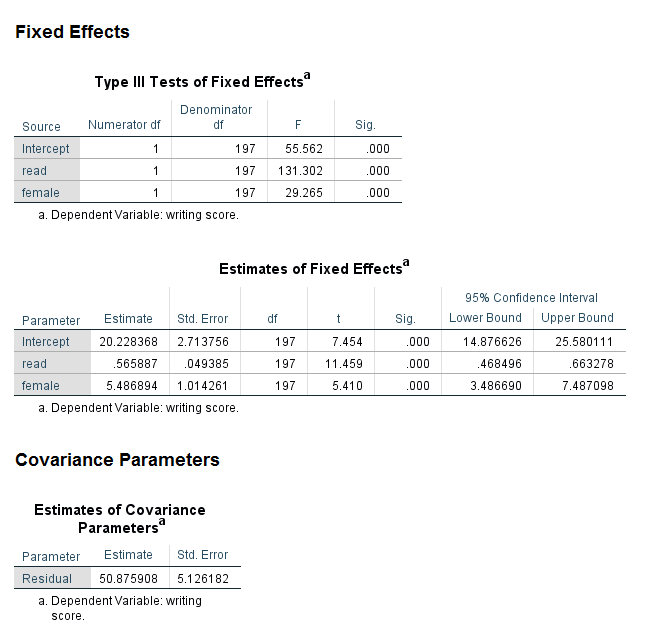
SPSS Mixed Command
Mixed Models in SPSS and interpretation of Random Effects Asked 2 years, 10 months ago Modified 2 years, 10 months ago Viewed 1k times 3 I am trying to run a mixed model using SPSS. The example I am using is taken from the book "Linear Mixed Models, a practical guide using statistical software" of West, Welch and Galecki.
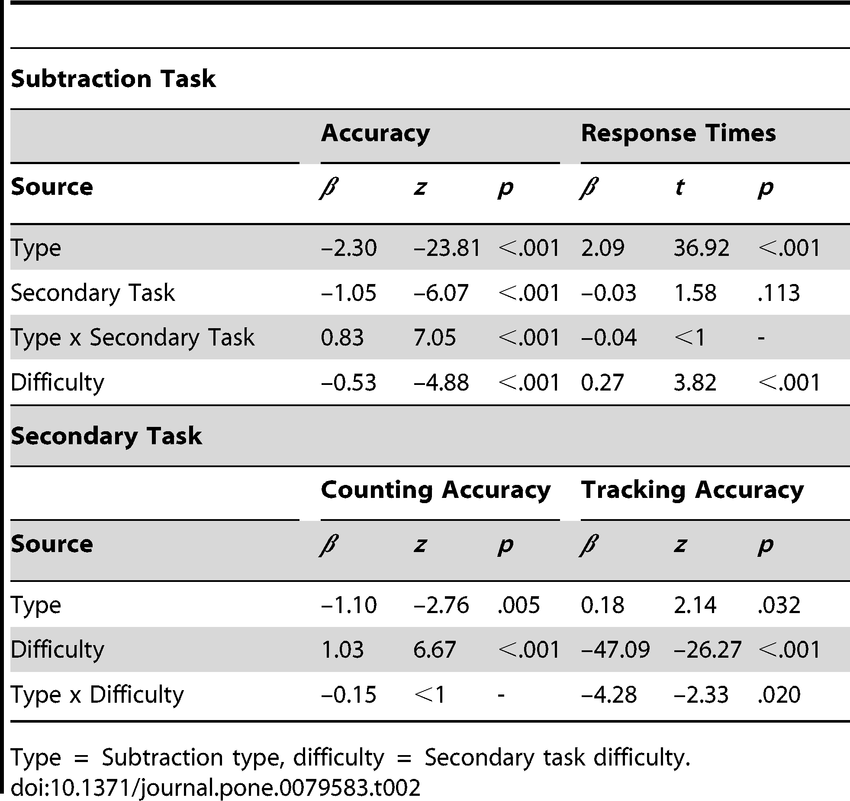
Summary of mixedeffects model results for Experiment 2. Download Table
The term mixed model refers to the use of both xed and random e ects in the same analysis. As explained in section 14.1, xed e ects have levels that are of primary interest and would be used again if the experiment were repeated.

Repeated Measures/Mixed Model ANOVA SPSS Lab 4. [PPT Powerpoint]
At the end of the experiment, the psychologist uses a mixed ANOVA to determine whether any change in depression (i.e., the dependent variable) is the result of the interaction between exercise intensity (i.e., the "conditions/treatments", which is the within-subjects factor) and gender (i.e., a "characteristic" of the sample, which acts as the b.
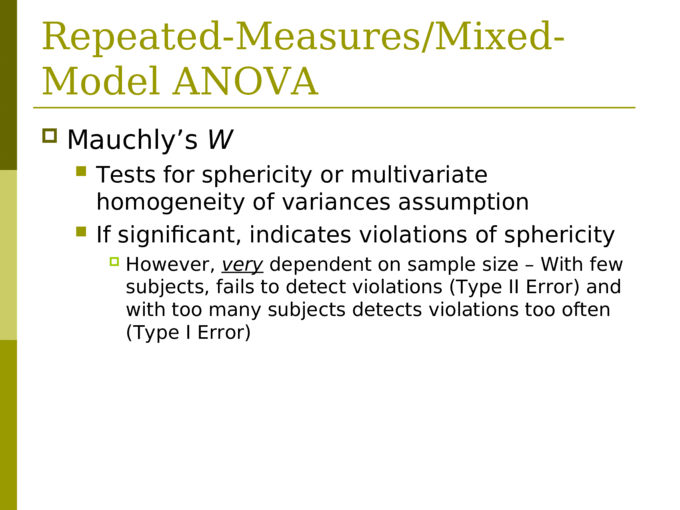
Repeated Measures/Mixed Model ANOVA SPSS Lab 4. [PPT Powerpoint]
Linear Mixed Models is used to estimate the effect of different coupons on spending while adjusting for correlation due to repeated observations on each subject over the 10 weeks. Methods Maximum likelihood (ML) and restricted maximum likelihood (REML) estimation. Statistics
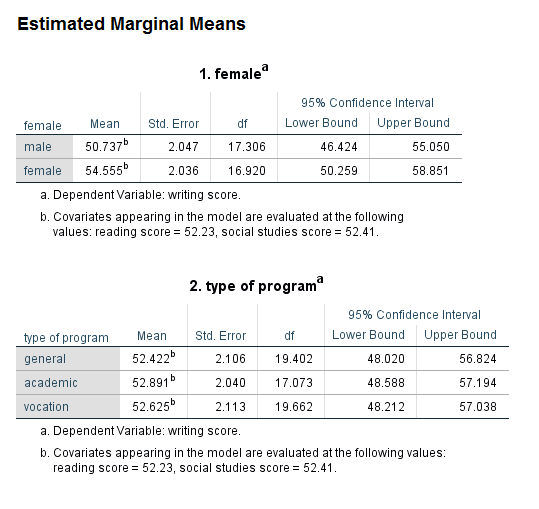
SPSS Mixed Command
About Press Copyright Contact us Creators Advertise Developers Terms Privacy Policy & Safety How YouTube works Test new features NFL Sunday Ticket Press Copyright.

Modern repeated measures analysis using mixed models in SPSS (1) YouTube
In this article we document for posterity how to fit some basic mixed-effect models in R using the lme4 and nlme packages, and how to replicate the results in SPSS. In this article we work with R 4.2.0, lme4 version 1.1-29, nlme version 3.1-157, and SPSS version 28.0.1.1.
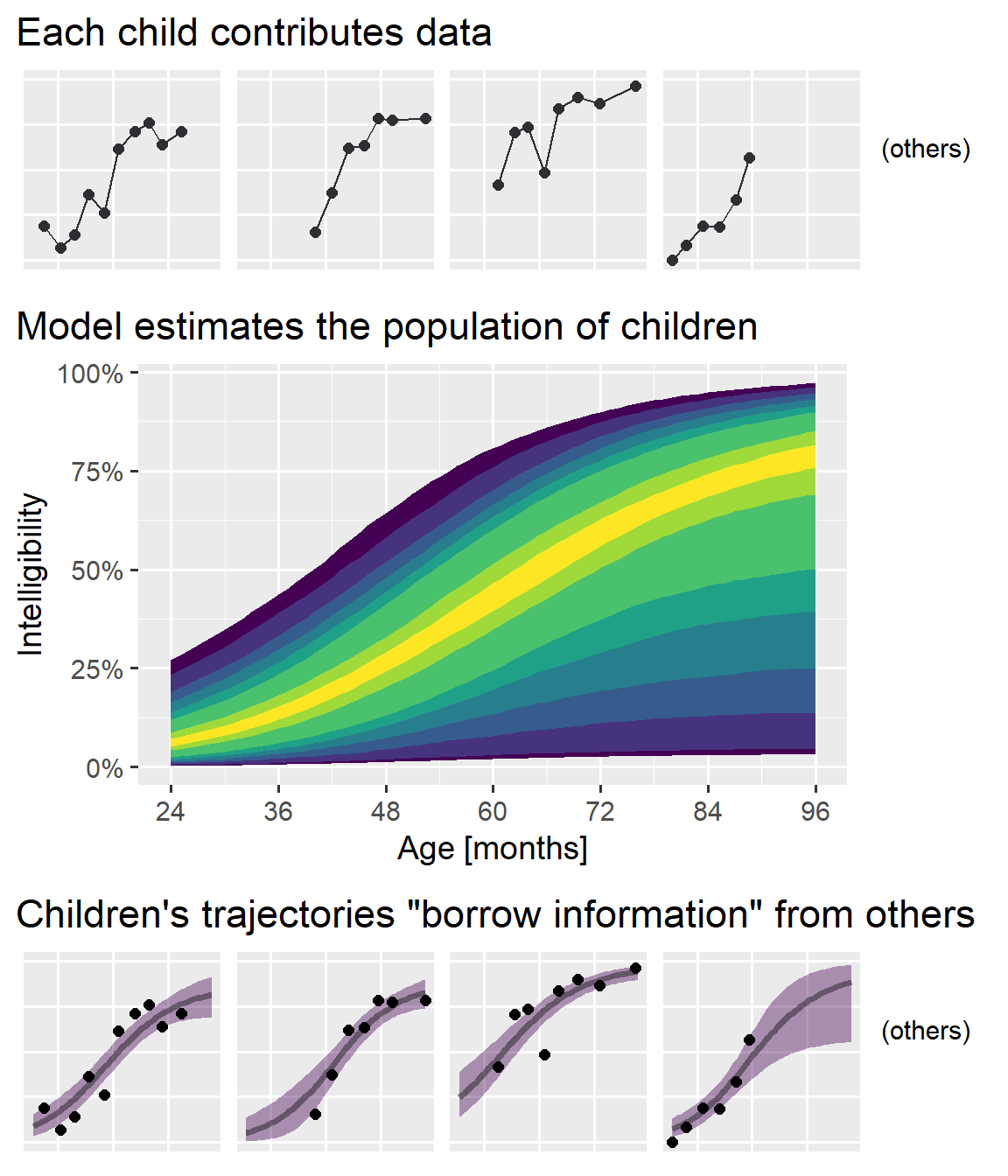
Another mixed effects model visualization Higher Order Functions
The mixed command in SPSS is used to run linear regression models, including mixed effects models. When most people think of linear regression, they think of ordinary least squares (OLS) regression. In this type of regression, the outcome variable is continuous, and the predictor variables can be continuous, categorical, or both.

Modern repeated measures analysis using mixed models in SPSS (2) YouTube
7 Linear Mixed-Effects Modeling in SPSS In examples 4 through 6, we use a semiconductor dataset that appeared in Pinheiro and Bates (2000) to illustrate the similarity between GLM, MIXED, and VARCOMP. The dependent variable in this dataset is "current" and the predictor is "voltage." The data are collected from a sample of ten silicon.

SPSS Advanced Statistics IBM
Linear mixed models (LMMs) are statistical models used to analyze data that have both fixed and random effects. They are an extension of linear regression models that incorporate random effects to account for correlation and variability within the data.

Research Engineer Conduct MixedEffects ANOVA in SPSS
Mixed effects models refer to a variety of models which have as a key feature both fixed and random effects. The distinction between fixed and random effects is a murky one. As pointed out by Gelman (2005), there are several, often conflicting, definitions of fixed effects as well as definitions of random effects.
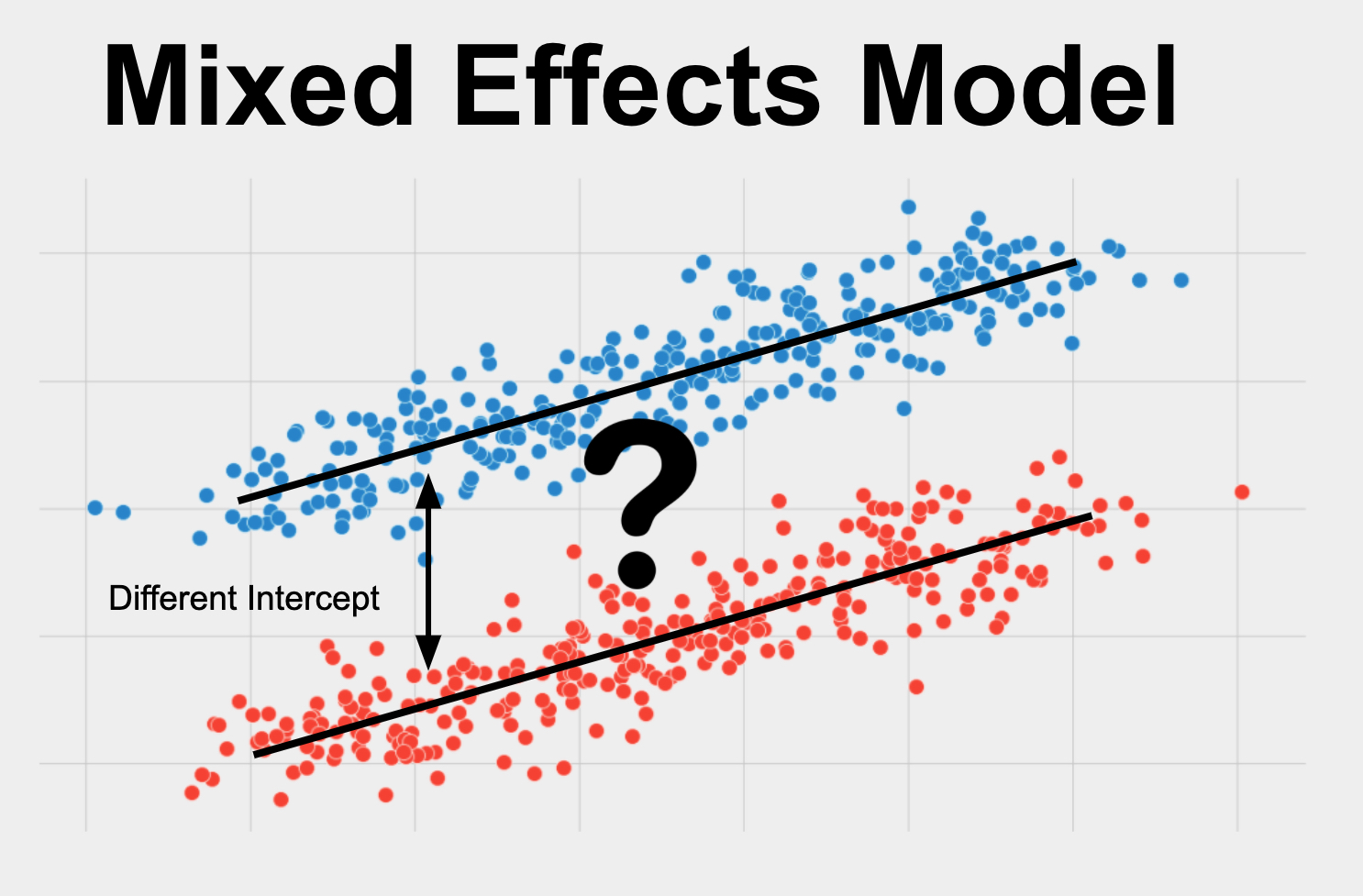
Mixed Effects Model
Analysing repeated measures with Linear Mixed Models (random effects models) (1) Robin Beaumont [email protected] D:\web_sites_mine\HIcourseweb new\stats\statistics2\repeated_measures_1_spss_lmm_intro.docx page 4 of 18 2. Wide and long data formats
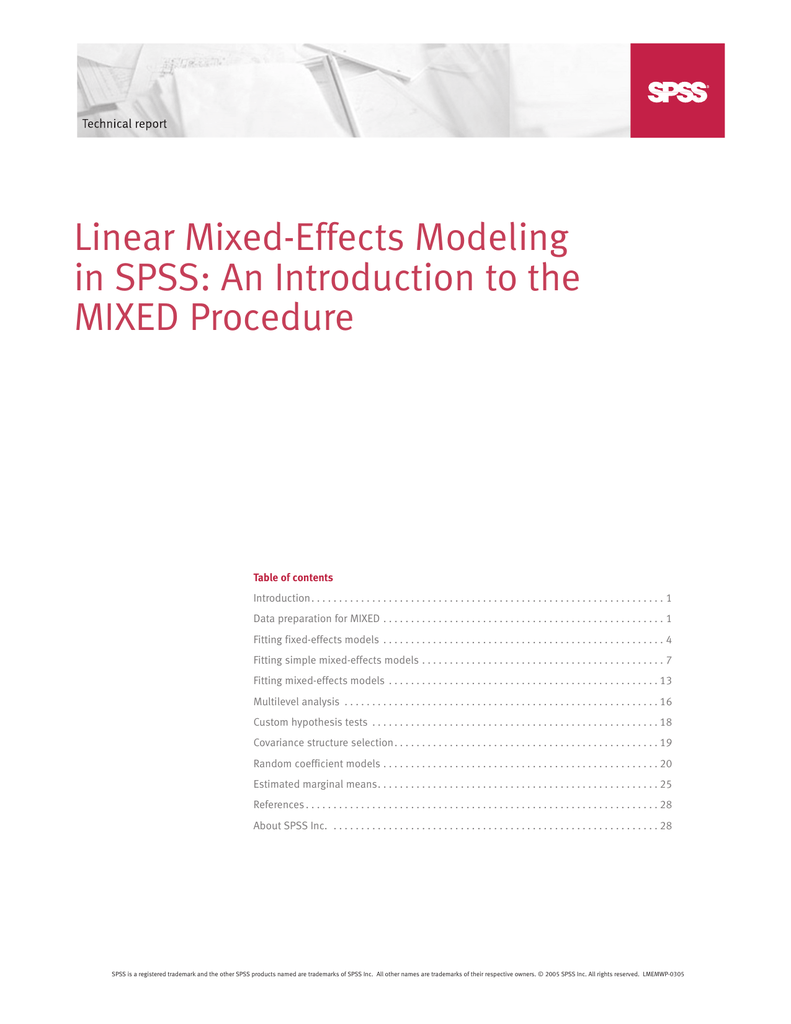
Linear MixedEffects Modeling in SPSS An Introduction to the
My answer: No. (And by the way, this is all true in SAS as well. I'll include the SAS versions in parentheses). You can think of SPSS Mixed (SAS proc mixed) as the clustered-data version of SPSS GLM (proc glm). They have a lot of similarities in both their syntax and the kinds of models they can run.

How to do Generalized linear mixed model in SPSS by Gemechu Fufa YouTube
The Linear Mixed Model; Using Linear Mixed Models to Analyze Product Test Results From Multiple Markets; Using Linear Mixed Models to Analyze Repeated Measurements; Using Linear Mixed Models to Analyze a Crossover Trial; Using Linear Mixed Models to Model Random Effects and Repeated Measures; Using Linear Mixed Models to Fit a Random.

Mixed Models in SPSS and interpretation of Random Effects Cross Validated
Repeated measures analyse an introduction to the Mixed models (random effects) option in SPSS. Demonstrates different Covariance matrix types & how to use.